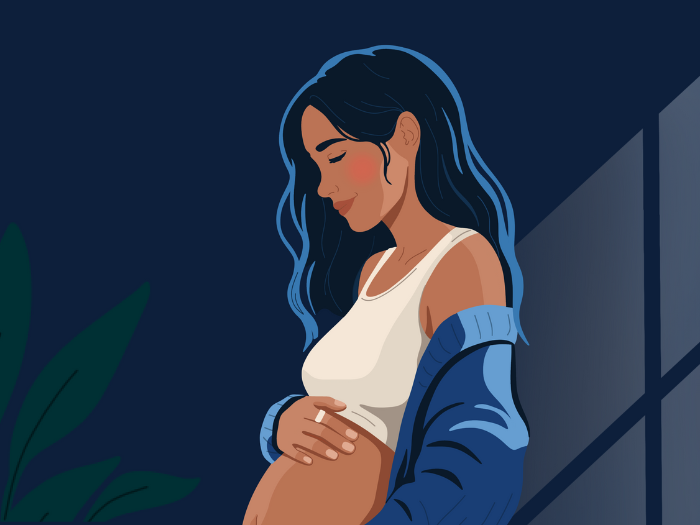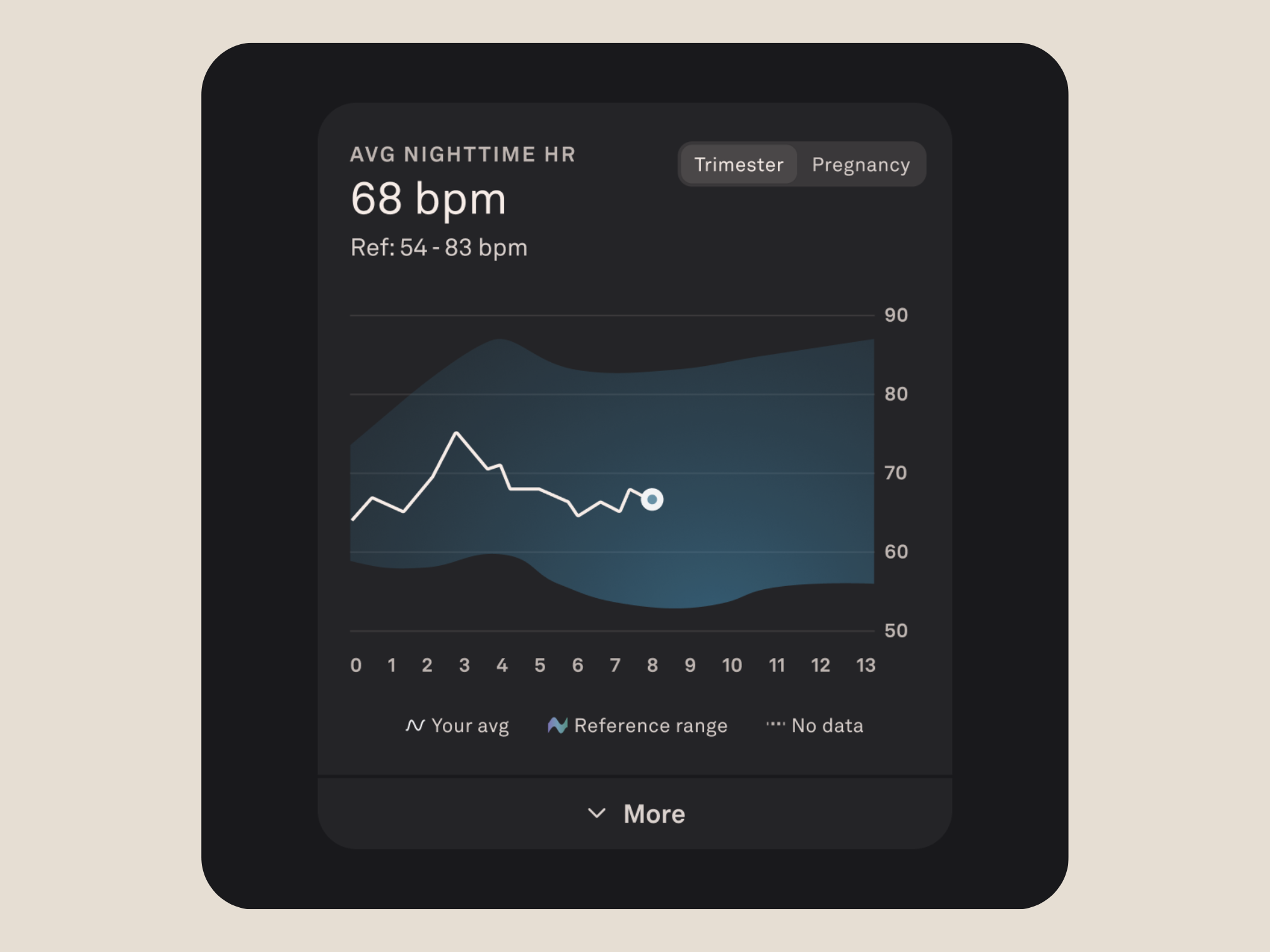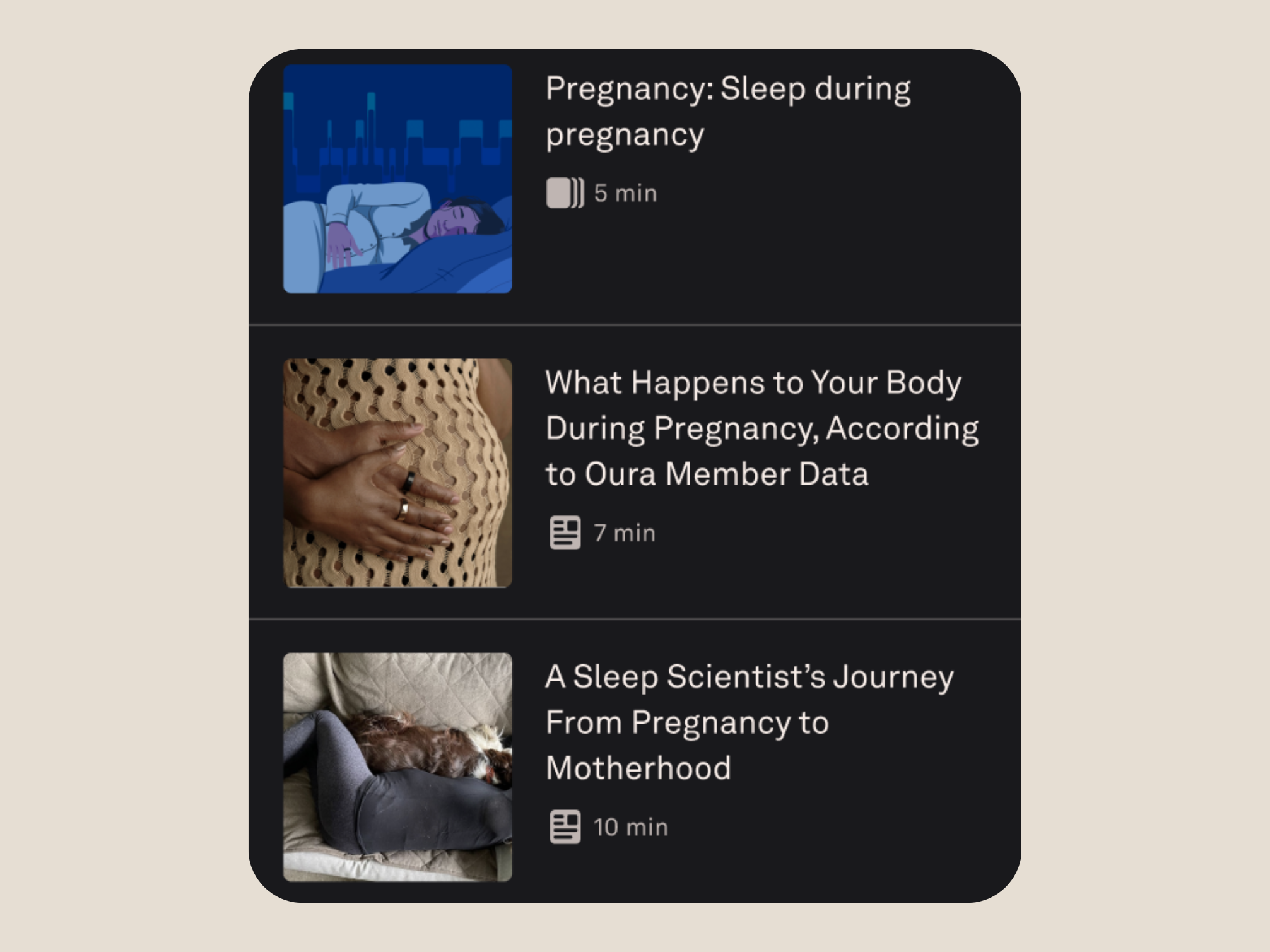The Pregnancy Insights feature is designed to support mothers-to-be with data-backed insights, support, and education throughout every phase of their journey.
As of August 12, 2025, a newly redesigned Pregnancy Insights experience is rolling out to all Oura Ring Gen3 and Oura Ring 4 Members. This first-of-its-kind pregnancy tracking tool is personalized to you, at every phase of your journey. With this update, Oura is your personal guide for everything you’re expecting.
“Pregnancy is one of the most physiologically significant events in many members’ lives,” says Neta Gotlieb, PhD, Staff Product Manager, Women’s Health at Oura. “Our goal with this feature is to equip our pregnant members to better know their bodies and take care of their health accordingly.”
When you opt into Pregnancy Insights, Oura highlights key health metrics during your pregnancy—including temperature trends, resting heart rate, heart rate variability, and respiratory rate—to illustrate physiological changes throughout your journey.
As your body is undergoing numerous changes, these insights can help reassure you by showing you the wide range of typical pregnancy patterns. Plus, each week, you’ll see science-driven insights into what’s happening, helping you understand your symptoms and how you might expect your biometric trends to shift.
From week 4 to week 40, Oura is here to support and guide you through every phase. Learn more about the updated Pregnancy Insights and how Oura insights now take pregnancy into account below.
You’re in control of your body—and your health data. Feel safe knowing you’re in charge when it comes to your Oura information. Learn more about our Privacy Policy.
Pregnancy Insights Features
Gestational Age Tracker
Each day, you’ll see how far along you are in your pregnancy by trimester, as represented by three rings. A weekly insight message, based on your gestational age, offers information about what changes to expect.
Keep Track of Symptoms With Tags
In Pregnancy Insights, you can tag your habits, feelings, physical changes, external context (e.g. high altitude) and more to understand how certain aspects of your pregnancy journey may affect your biometrics. Based on science-backed data, weekly insight messages also provide information on what you may be experiencing each week.
Plus, we’ve added 35 new tags to capture the full pregnancy experience, such as Braxton Hicks contractions, Contractions, High sexual desire, Heartburn, Constipation, and Vomiting.
RELATED: Pregnancy Symptoms by Trimester: What’s Normal—and What Might Be a Red Flag
Reference Ranges for Daily Vitals
Oura tracks four metrics that are critical during pregnancy: temperature trends, resting heart rate, heart rate variability, and respiratory rate. Designed in collaboration with Oura Medical Advisor Eleni Jaswa, MD, a fertility specialist, Pregnancy Insights will contextualize your personal trends alongside aggregate data to show you commonly observed patterns of pregnancy.
“Learning about what’s normal, knowing what to expect from the maternal body, and understanding that daily fluctuations are common can offer much-needed reassurance in a time of uncertainty,” Dr. Gotlieb says.
You can toggle the view between the current trimester and overall pregnancy to better understand your pregnancy along the way.
READ MORE: How Your Health Metrics Change During Pregnancy, According to Oura Data
Educational Content
Learn more about what’s happening in your body with in-depth content exploring a range of topics related to pregnancy, such as how to get better sleep, prenatal fitness, and mindfulness exercises for moms-to-be. Fresh content will be delivered weekly.
Oura Insights Now Take Pregnancy Into Account
Now, your Oura insights, including Readiness, Sleep, Rest Mode, and Recovery Mode, will take pregnancy and gestational age into consideration. This pregnancy-aware approach ensures an empathetic approach and understanding of your unique journey and physiological fluctuations.
In addition, Oura Advisor, your AI-powered personal health companion, now takes your pregnancy into consideration and can serve as a sounding board for questions about your symptoms and more.
How Oura Calculates Trimesters
Did you know that you’re considered pregnant before you even conceive? When you’re pregnant, you are given an estimated “due date.” This estimated due date assumes a 28-day cycle, with ovulation occurring on day 14. So if you conceive within that cycle, your first day of pregnancy is the first day of your last period!
In other words: The first day of your missed period marks the start of pregnancy, which is considered four weeks into your first trimester.
When you start getting ultrasound pregnancy scans, the sonographer and your doctor may update your gestational age based on fetal size. In Pregnancy Insights, you can update your estimated due date once you have this information.
The length of each trimester is defined differently by different organizations. On Oura Pregnancy Insights, we are following The American College of Obstetricians and Gynecologists (ACOG)’s definition of trimester length, which is as follows:
- First trimester (first day to 13 weeks and 6 days): The time when fertilization and major organ development occur.
- Second trimester (14 weeks and 0 days to 27 weeks and 6 days): The time of rapid growth and development.
- Third trimester (28 weeks and 0 days to 40 weeks and 6 days): The time when the fetus’s weight increases and the organs mature so they are ready to function after birth.
LEARN MORE: How to Sleep Better During Pregnancy














